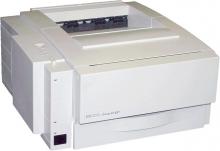Linux multifunction printy thing
Posted by cafuego on Tuesday 15 February 2011.Back in 1998 our old trusty HP LaserJet MP5 broke and we replaced it with an HP LaserJet MP6. Over the decades it has provided its humans with reliable Mac OS and Linux printing joy and one of the cats with a warm place to sit in winter and - once - an emergency litter tray.
The cat wee didn't kill it though and after a clean up it provided close to another decade's worth of (slightly smelly) prints.
Sadly it's now running low on toner and it would seem that obtaining new toner cartridges for it is no longer a matter of simply popping down to OfficeWorks. Time then to go shopping for printers.




 Part of setting up the new site is importing users and their content profile nodes from a different Drupal site, that was setup a year or two ago to manage an event.
Part of setting up the new site is importing users and their content profile nodes from a different Drupal site, that was setup a year or two ago to manage an event.
 I'm in the process of setting up
I'm in the process of setting up